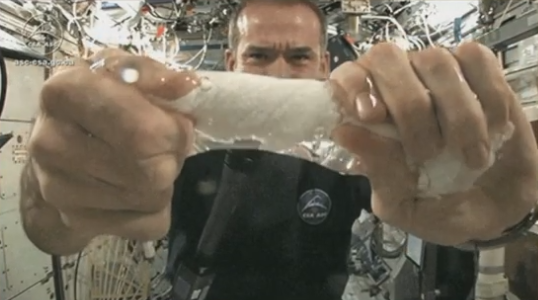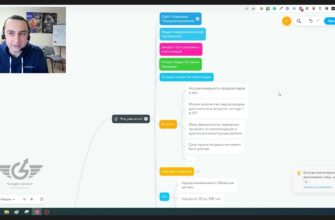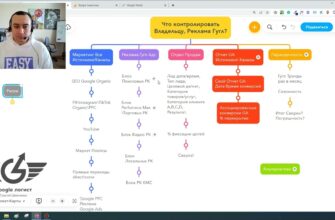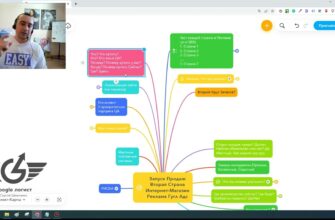- The essence of the strategy
- Description of the problem being solved
- Setting up multi-level marketing
- Stage 1. Target audience analysis
- Stage 2. Analysis of the technical characteristics of those who have already bought on the site
- Stage 3. Combining all options with a funnel
- Stage 4. Setting up and launching advertising campaigns
- Result of setting up and launching advertising campaigns
- In closing
Hello! My name is Yana. In today’s video, we will analyze what is multi-level remarketing or multi-level media sales funnels.
The essence of the strategy
In short, this is an advertising strategy, which consists in creating advertising campaigns based on a description of the portraits of the target audience, the technical features of the audience’s communication with the site online. As a result of the work of these advertising campaigns, you get an increase in the number of conversions, leads, applications, sales, orders, calls and other things at least three times and a decrease in the cost of conversions by 30 percent. Sounds difficult. Really?
Using a simple example, let’s consider how the procedure for setting up multi-level remarketing takes place. Let’s say there is an online store that sells branded leather shoes, with its own production, the check is average, average plus. I included indicators in the initial data – about 20 thousand users visit the site every month. Let’s say everyone visited the site several times, as a result, they made 40,000 sessions. There were only 200 transactions per month. This is a rather hypothetical example. Actual data may vary.
How many calls and sales will I get by ordering contextual advertising from you?
I need to calculate the conversion of my website Describe
the task
in the application
Calculate potential ad revenue Google
contextual advertising calculator
Description of the problem being solved
The problem is that out of 20,000 users, 200 transactions are obtained. Transactions, let me remind you, are orders using a shopping cart, which are sent to Google Analytics in a certain way. The figure of 20 thousand users changes monthly up or down. Somewhere around 30, somewhere around 40, somewhere around 10 thousand users, depending on the volume of traffic from Google organics, perhaps direct clicks, email newsletters, etc. The problem is that this threshold of 200 is hard enough for an online store to jump over. Agree, getting 20 thousand people a month, not being able to squeeze out more than 200 is a rather serious problem.

Multi-level remarketing can help here, the essence of which is to squeeze out more transactions from an average of 20 thousand users. Why is it so difficult now to squeeze conversions for large online stores? Everything is quite simple, simple and complex at the same time – a lot of competition. You agree that a large market of analogues opens up to the user in the footwear field. He can go to one, second, third, tenth store. There are a lot of offline outlets, cheaper, more expensive shoes. The user has a lot of choice, he can buy from us or tomorrow from a competitor or today from our competitor. The task is not to lose 20 thousand users and encourage them to reduce the time to purchase, including, except for receiving transactions.
Setting up multi-level marketing
Stage 1. Target audience analysis

Where does the customization begin? First of all, you provide a description of the portraits of the target audience, a description of who the client is – the middle segments. There may be several of them – 5, 10, 12, 20 or more, depending on the complexity and specifics of the product being sold. And of course, from the complexity of communications in the procedure for buying goods online by the buyer.
Let’s consider our online store. Let’s take such portraits as shopaholic fashionistas – girls, let’s say 20-30 years old, constantly following some new exclusive novelties. They are only interested in some fashionable shoes, some unusual trendy ones. We produce this, the design department makes cool cool shoes that can be worn in trends for a few more years. Fashionistas follow some periods of discounts, our new products, study in detail, of course, often buy.
Let’s take a second portrait of women, business women, or maybe heads of departments. What is important to them? The age is acceptable – 30-45 years old, women are already high-status, naturally they cannot afford some kind of fancy shoes, more in a classic restrained style, while they want to stand out from their colleagues like ordinary women.
Let’s take men as the third portrait. Let’s say 45-year-old businessmen who don’t have much time to surf the Internet or go to stores to buy something. He has been buying from us online for a long time. He visits the site, immediately orders, buys, leaves. Thus, he can buy offline – he went in, called the consultant, “you need this, this”, he liked it, bought it, went on.

All portraits are quite generalized, they may differ from real data or from the example that is described.
Stage 2. Analysis of the technical characteristics of those who have already bought on the site
Next, the task of specialists within our team is to analyze the technical characteristics of the audience that made these 200 transactions. Most of the buyers make these orders through the site all the time. It is important to note that this entire pool of technical characteristics will be tied to each provided portrait. Each portrait has its own selection and purchase algorithm. Right? Fashionable girls will make a lot of sessions with us, unlike, say, a businessman, a man who has little time to search, compare, scroll through the catalog. I went, I saw, I bought. it is very important to combine these target portraits with technical parameters.
What is included in the technical parameters:
What are the technical parameters included? Of course, the most common simple characteristics are time on the site, the number of pages viewed, gender, age, interests, traffic sources for visiting the site. Then – analysis of traffic sources or advertising campaigns from which they made the last transactions or make the most often. This is the number of days before the conversion that each of the described audience segments makes. Also the number of sessions they have on average over a certain period of time, also the average number of sessions before converting, and we take into account that there are often some kind of discount sale periods in our topics. In them, we also separately analyze the number of sessions, duration, time.
How many calls and sales will I get by ordering contextual advertising from you?
I need to calculate the conversion of my website Describe
the task
in the application
Calculate potential ad revenue Google
contextual advertising calculator
It is important for each segment to look at the time, frequently visited pages, how long, for example, fashionistas stay on them. How often they visit the section of new products, which models they stop on more often, how long they study, look at the details of our product, whether they go to some of our blog pages, social networks. Perhaps they also go to sales pages, which they look at more often before making a purchase. Also important points for this audience may be the average check of the product that was viewed, as well as the product that was bought, this is also an important point. Also, how often they register, subscribe to our newsletter, with notification of new products, some seasonal sales, promotions.
If they connect to our club, do they order club cards and so on. Do they look at the size chart and so on. The entire pool, all the data that comes to Google Analytics is decomposed and adjusted to each segment provided by the client.
Stage 3. Combining all options with a funnel

For each type of segments, the set will be completely different. I don’t know how difficult it sounds in this case, in setting it is really difficult. It’s all built as a combined technical parameters of communications with the site, with a target portrait.
Also, a kind of sales funnel is being developed inside the site. inside the site there are certain steps, a set of steps taken by users to order, to the finish line. These new technical combinations for each portrait are combined with each stage of the sales funnel on the site. As a result, a large pool of remarketing lists is formed. This is also quite difficult.
Stage 4. Setting up and launching advertising campaigns
What do we do with this story next? We launch these advertising campaigns throughout the funnel at the same time. The task of each of the stages is to advance the previous one below. Our task is to bring to the order through the basket. Right? So the task of each stage of each remarketing list is to move these users who have visited the site down the funnel as quickly as possible, as efficiently as possible.
An important point is that a separate message is developed for each stage of the sales funnel for each portrait. We try to choose which of the segments at which stage this or that ad will suit. This is an important point, with the right message, with the right remarketing list, the strategy will work.
Why is the message important? You must understand that on average, there are approximately five thousand advertisements per user per day. To some this figure will seem small, to others quite large. I want to note the fact that out of these five thousand announcements, a person can physically realize only a hundred. Our task is not only to get into this hundred with the help of remarketing lists, but also to catch on. It means to hit the client in pain, it means to make him pay attention to us, go to the site and, with the help of an advertisement, still warm up a little interest in the product. Sounds easy for some, hard for others. But we will implement it.
Result of setting up and launching advertising campaigns
Run, for example, the widest segment of each remarketing list. A person coming from the top of the funnel directly goes to the next one, according to the technical parameters prescribed for the second stage, we leave it, form a new remarketing list or combine it with the current one.
Those that did not respond to our ads or did, but we see that this audience does not fit the next stage of the funnel – we remove it, exclude it from advertising campaigns. Please note that we do not rule it out completely, we will be able to work with it in some other variants of strategies, in this case our goal is to lead a person through this funnel as quickly, as efficiently and as inexpensively as possible. We grab a person’s hand through the advertisement and stretch it to the end of the funnel as much as possible. This is repeated from moment to moment. The task is to stretch users to the end by receiving transactions.

A bonus based on the results of this analysis of the launch of A / B testing of contextual advertising, in remarketing, a portrait is obtained, defined with a technical set of client parameters, on the basis of which it is already possible to form quite simply look-alike audiences, similar audiences of users that are easily launched separately and act as a generator of a new audience, which is more likely to convert, of course, to each of the portraits.
This is a very powerful thing – building look-alike audiences takes a lot of time in Google adwords. In this way, the output is a more or less optimal average version of this portrait, which is easily optimized in Google advertising, based on which you get plus additional sales.
In closing
This is a roughly simple example of what our team is doing with layered remarketing. Who are these promotional strategies for? First of all – online stores with a large amount of traffic – 10,000 monthly users and more. This is suitable for services, some kind of product one-pagers and others. The main condition is a large amount of traffic.
If you have 500 monthly users, it’s quite difficult to set up multi-level funnels right away. First you have to recruit this audience. How can you dial? There are media advertising campaigns. Our team usually launches CMS to completely new audiences with the exception of the one that was already on the site, which means that, according to the description of the portraits, it will try, thanks to the work of the team, to find new audiences that will be similar to the tops of the segments or approximately to what is at the end or the middle. It generates a new audience, new fresh blood, which is already captured by multi-level remarketing and carried through the funnel. The setup is quite complicated, the team spends a lot of effort and resources on everything together with you.
Such a roughly simple description of the essence of the service.
If you are interested in whether this service is right for you now specifically during this period of time or the possibility of launching it in the next quarter, please leave a request or write in the comments to the video, and we will be happy to advise you.
















